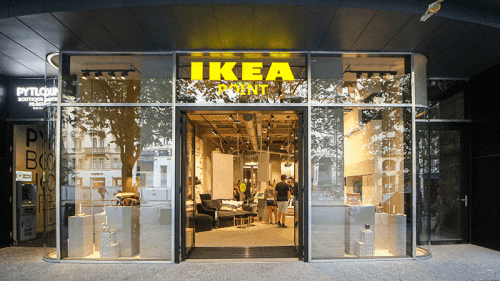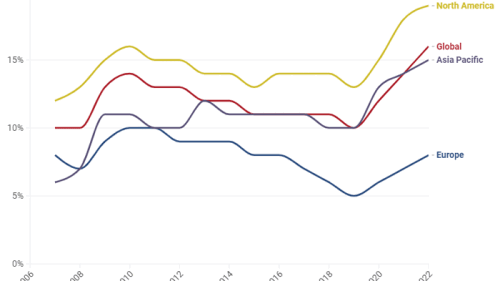The Washington Housing Initiative (WHI) wants to put capital to work to preserve a dwindling supply of workforce housing across the Washington, D.C., metropolitan area. Ultimately, though, the goal of the private/public initiative is much bigger.
The WHI has brought together a large group of public and private stakeholders—including experienced multifamily developers, owners, and operators—to create a strategic model addressing the workforce housing shortage that can be shared broadly with other communities battling the same problem.
“We want to show that there is a way to preserve workforce housing at scale and attract other institutional operators to replicate what we’re doing in the initiative,” says A.J. Jackson, executive vice president of social impact investing at JBG Smith, a publicly traded real estate investment trust based in Chevy Chase, Maryland.
JBG Smith founded the WHI with the Federal City Council, a nonprofit, nonpartisan organization dedicated to improvement of the District of Columbia. The initial target is to preserve 2,000 to 3,000 workforce units throughout the region by acquiring existing multifamily properties and keeping rents in a range of 30 to 80 percent of the area median income. The initiative is currently pursuing several acquisition opportunities and hopes to announce its first deal this fall.
“I’ve seen firsthand the evolution of need in the District,” says Josh Bernstein, chief executive officer of Bernstein Management Corp., a real estate investment and management company with assets in the D.C. metro area; he is also an executive committee member on the Federal City Council. “The stresses on households across a very broad range of income levels to find decent, affordable housing close to amenities and work has just grown and grown despite efforts to address it.”
It is a success story that people are moving back into urban neighborhoods and investments being made to revitalize neighborhoods. However, the benefits of those improvements are not evenly distributed, Bernstein says. Longtime residents are often priced out of their neighborhoods.
“We have come up with what we hope is a scalable, replicable model, which will not only address the needs in Washington now, but we think it could be a model for best practices that could be adopted elsewhere,” he says.
Impact Investors Create Low-Cost Capital Source
The WHI combines two key components. One piece is spearheaded by the Washington Housing Conservancy, an independent, not-for-profit housing provider that will buy, own, and operate the housing. The conservancy has set a goal of raising $30 million in seed money from charitable donations that it will use to acquire existing apartment communities, fund rent subsidies to low- and moderate-income residents, and help support neighborhood services, such as affordable child care and after-school programs.
“Beyond just buying real estate, there is a social impact committee associated with this that is looking at creating healthy, vibrant mixed-use communities,” says David Roodberg, chairman of the board of the conservancy and chief executive officer and president at Horning Brothers, an apartment and commercial property developer and manager based in Washington. The operating model for the conservancy also is set up so that over time it will start generating funds for itself in order to be self-sustaining rather than have to rely on donations.
The second component is the Impact Pool, an investment vehicle managed by JBG Smith that will provide private equity financing to the conservancy for acquisitions. Its goal is to raise $150 million that will be deployed as low-cost mezzanine loans. So far, investors have committed $78 million in a closing that occurred in April; a second closing planned for this fall is expected to bring the total to $100 million.
Often, many different groups try to solve the affordable housing issue individually, notes Roodberg. “What I’m excited about with this model is that it brings together the private sector—both the for-profit, and nonprofit and philanthropy—and works with government to come up with a solution,” he says.
Leveraging Lower-Cost Capital
One important step for the WHI was creating a structure that would be able to attract private capital at scale from sources such as institutions, banks, high-net-worth individuals, and foundations. Private capital investors in the impact pool have a target return of 7 percent that is substantially tax-exempt. The tax-exempt component, along with the fact that JBG Smith does not take a promote or fee on the management of the fund, equates to a 12 to 13 percent return in a traditional fund model, notes Jackson. Also, any returns above the target return threshold are donated to the conservancy.
“The core of our model is to provide lower-cost capital so that a buyer, in this case the conservancy, can compete with a buyer who is focused on value add or redevelopment,” says Jackson. It is faster and less expensive to preserve existing workforce housing rather than build new homes. For example, construction costs in the Washington metro area typically range from $400,000 to $500,000 per unit.
Jackson estimates a significant inventory of naturally occurring affordable housing exists in the D.C. metro area—about 300,000 units—a figure based on factors such as age and location. However, no protections exist for those units in terms of participating in specific affordable housing programs. “So, there is really a tremendous opportunity in our region to acquire existing assets as a tool for preserving long-term affordability,” he says.
Proving the Model Can Work
The ultimate measure of success is not just the impact the WHI could have on the District, but whether it can be a catalyst for similar models in other cities. That is a main reason the WHI has been open in sharing details of its structure, including return targets and lessons learned. “We do think that it has the potential to be a valuable tool for all types of jurisdictions that are facing this issue of affordable housing availability,” Jackson says.
A number of competitive advantages allow this model to work, says Bernstein. First, it has a distinctive strategy in that it has a nonprofit entity that is exempt from real estate taxes. That constitutes a significant cost-saving advantage. Second, the impact pool provides a stable capital source by harnessing private capital, especially banks with Community Reinvestment Act requirements.
Third, the initiative also is harnessing real estate expertise with JBG Smith as the management company, along with a board of knowledgeable real estate players who are lending their expertise at no cost, says Bernstein. “We do think it’s an innovative structure, and we believe we can compete to buy existing properties that otherwise would likely be renovated with a goal of raising rents,” he says.
Another important component of the model that is still being proved is the ability to create strong communities with a wide range of income levels. “Where I think we want to make sure we are doing this right is on the social impact side in creating these mixed-income communities,” Bernstein says. “That’s probably where we have the most work to do.”





